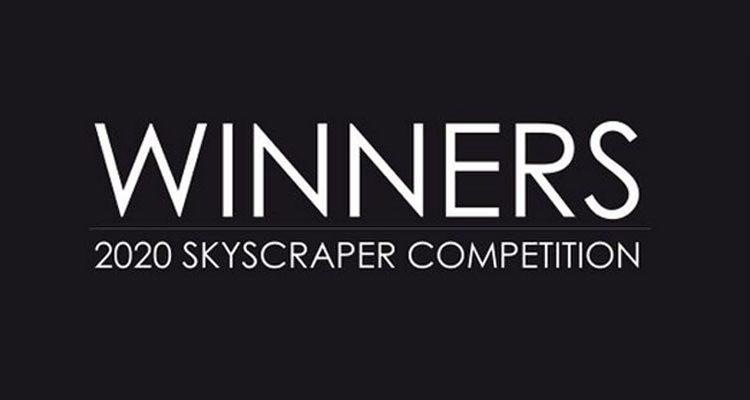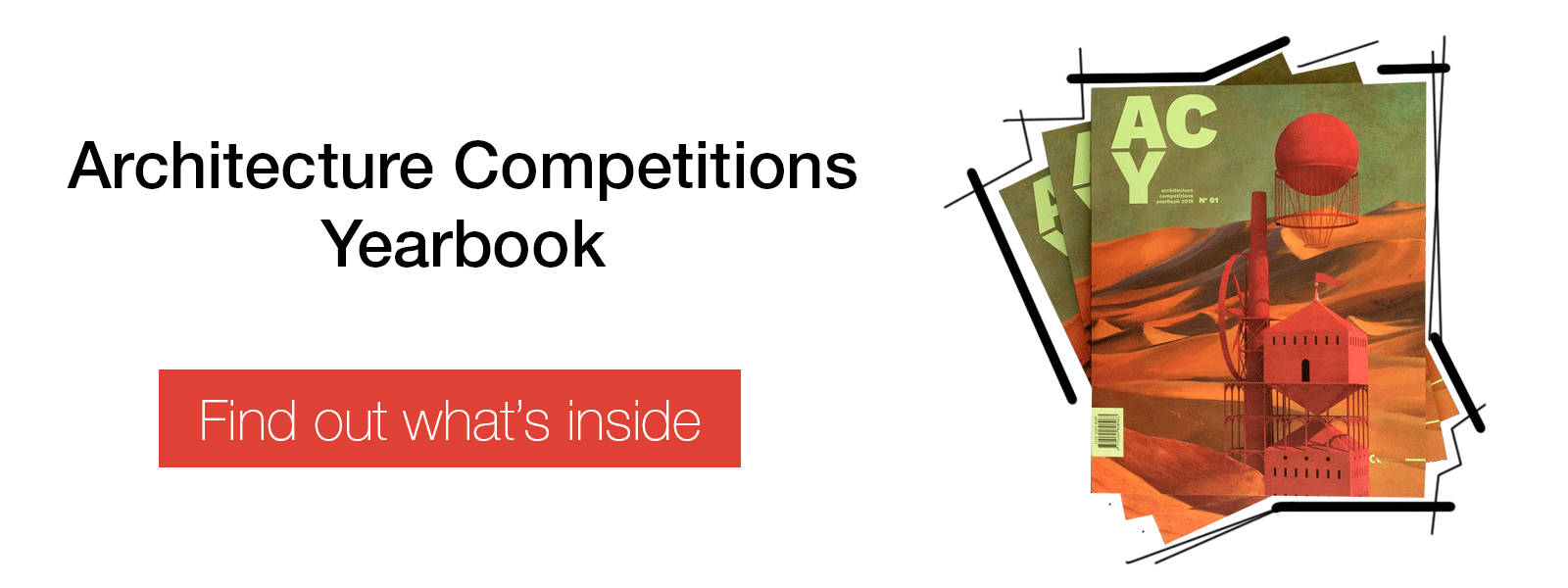eVolo Magazine is pleased to announce the winners of the 2020 Skyscraper Competition. The Jury selected 3 winners and 22 honorable mentions from 473 projects received. The annual award established in 2006 recognizes visionary ideas that through the novel use of technology, materials, programs, aesthetics, and spatial organizations, challenge the way we understand vertical architecture and its relationship with the natural and built environments.
The FIRST PLACE was awarded to EPIDEMIC BABEL designed by D Lee, Gavin Shen, Weiyuan Xu, and Xinhao Yuan from China. The project envisions a rapid-deployment healthcare skyscraper for epidemic outbreaks. The building consists of a steel frame in which pre-fabricated programmatic boxes would plug-in according to specific demands.
The recipients of the SECOND PLACE are Yutian Tang and Yuntao Xu from The United States for the project EGALITARIAN NATURE. The proposal imagines a man-made vertical park for recreational activities within high-density urban areas accessible to all its inhabitants.
COAST BREAKWATER COMMUNITY designed by Charles Tzu Wei Chiang and Alejandro Moreno Guerrero from Taiwan received the THIRD PLACE. The project envisions a vertical housing community for fishermen in St. Louis, Senegal where rising sea levels have forced the inhabitants to move inland. The proposal is inspired by the traditional wooden architecture- a system of pillars, arches, and tensile structures.
The Honorable Mentions include a skyscraper for terraforming the permafrost, a proposal for repurposing decommissioned airplanes, a vertical cybermall, a water-scraper, and a reforestation skyscraper among other innovative projects.
The Jury was formed by Berrin Chatzi Chousein [Editor-in-Chief, World Architecture Community], Alper Derinboğaz [Founder, Salon Architects], Jürgen H. Mayer [Founder, J. MAYER H. and Partner, Architekten mbB], Manuel Navarro Zornoza [Principal, Latitude Architectural Group], Michael Neumann [Principal, Synn Architects], Ryuichi Sasaki [Founder, Sasaki Architecture], and Lu Yun [Founder, MUDA Architects].
1st PRIZE
Epidemic Babel: Healthcare Emergency Skyscraper
D Lee, Gavin Shen, Weiyuan Xu, Xinhao Yuan (China)


The Epidemic Babel is a rapid-deployment health care skyscraper designed as a response to the current Coronavirus pandemic that originated in Wuhan, China. The project takes into consideration that an epidemic outbreak is usually fast, leaving no time for governments and policymakers to react. Under these harsh circumstances, a weak healthcare infrastructure will soon be torn apart turning the epidemic into a deadly catastrophe.
The Epidemic Babel features two very important advantages: simple construction and rapid response. The entire building consists of a steel frame with several functional boxes with a very small footprint. The building pattern is simple enough that any qualified construction team can have it ready in five days. Once the steel frame is erected, the healthcare team will choose the appropriate functional boxes to be attached to the steel frame. This building pattern allows the skyscraper to respond to the outbreak in a very short time and relieve the burden of the existing health care infrastructure. All the programmatic boxes are pre-manufactured in factories and need no extra time for construction. The lightness of the frame and boxes also makes it easy to transport to remote locations. Compared to the temporal hospitals currently built in China, the Epidemic Babel is faster to construct and potentially less expensive.
2nd PRIZE
Egalitarian Nature: Vertical Green Park For Urban Areas
Yutian Tang, Yuntao Xu (United States)


The Egalitarian Nature skyscraper imagines a new building typology driven by the human urge for nature instead of capital. It is a new kind of infrastructure conceived to serve the whole society. The traditional skyscraper is reimagined as a mountain range that provides a new way to experience nature within an urban environment. A zigzag-climbing path is developed along with abstract spaces that encourage an unexpected engagement between people and nature. Accessing the tower is not decided by capital but individual physical strength.
ANOTHER NATURE
This design proposal explores a new possibility of tower typology and lifestyle in a high-density urban environment by rethinking the relationship between humans and nature. In future city planning, the existing free land may not be sufficient for building parks or gardens. However, the need for these areas is imperative and this skyscraper provides the opportunity for large green spaces within a small footprint. The tower is a combination of nature and a man-made environment. It is conceived as a vertical mountain in the center of a city: a mountain for all the people to hike or climb.
AN EGALITARIAN OBJECT
Since the skyscraper was born it has always been an instrument for the privileged. It is an object of power and a symbol of wealth. Air rights have become the new scoring point in the game of capital. The chase of height never stops and this unfair situation will never change until a new type of skyscraper shows up, not driven by capital but driven by nature. This skyscraper offers the entire society a fair opportunity to engage with a new vertical green space. The accessibility will not be granted by financial status but by the physical strength of the individual since there will be no elevators.
FREEDOM OF SPACE
“The distance between man and man which generate the way in which people gather and therefore ‘the place’: if a person is alone the place is a small room; if they are two together it is a larger room; if they are ten it is a school; if a hundred, a theater; if a thousand, an assembly hall; if ten thousand, a city; if a million, a metropolis…” –Superstudio.
Spaces within the skyscraper are in total freedom and flexibility. From one space to another space, from one surface to another surface, there is no difference. Places are only dependent on the distance between humans and their relationship with spatial volumes. The continual human movements and interactions give each space a programmatic meaning.
3rd PRIZE
Coast Breakwater: Vertical Community In Senegal For Rising Sea Levels
Charles Tzu Wei Chiang, Alejandro Moreno Guerrero (Taiwan)


St. Louis, Senegal, located in the northwest part of the country, near the mouth of The Senegal River, has been home to fishermen for generations. It is a hostile territory where there are constant confrontations with the neighboring countries regarding the established fishing boundaries and territories. In addition to the political and social problems, the region is affected by the rising sea level. Such natural phenomenon has forced the community to move inland, away from the shore.
This proposal is based on traditional pillar structures, which are used to prevent erosion. These structures will serve as a foundation for the new vertical housing units. The project is also inspired by Senegal’s traditional wooden architecture that uses a complex arch system with tensile structures. The system allows a high degree of adaptability and extendibility to create a new community by the sea challenging the rising sea level.
> For more entries please see eVolo 2020 results page <









